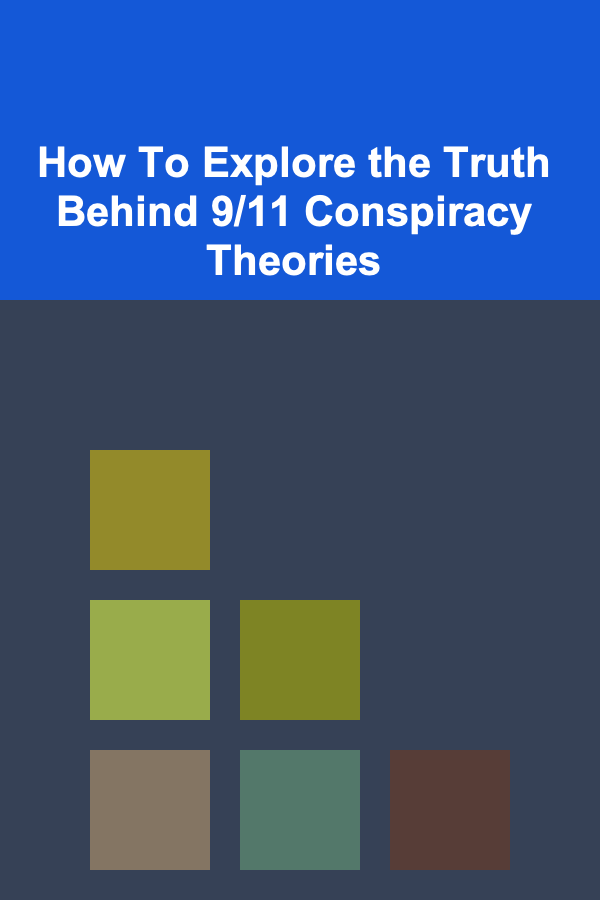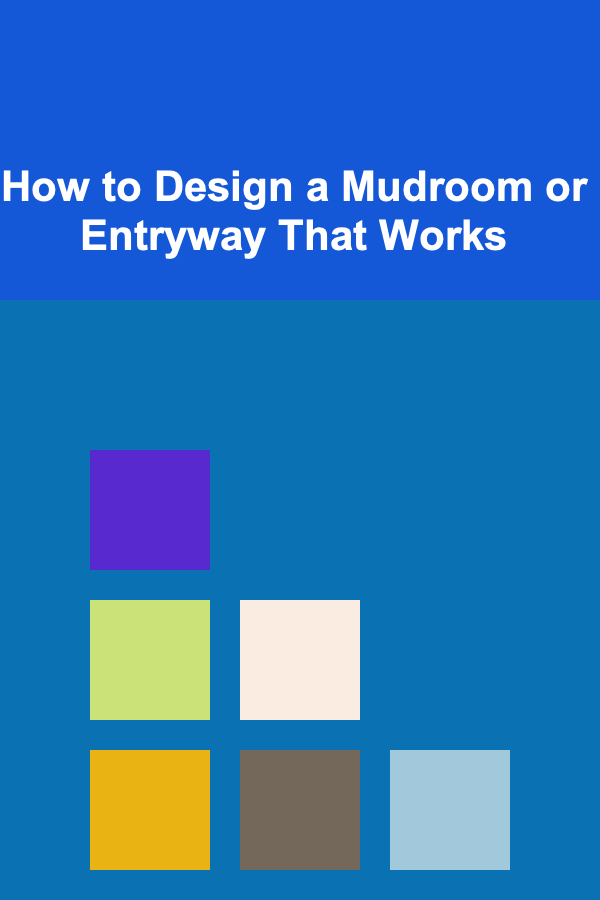
How To Explore the Truth Behind 9/11 Conspiracy Theories
ebook include PDF & Audio bundle (Micro Guide)
$12.99$7.99
Limited Time Offer! Order within the next:

The attacks on September 11, 2001, are among the most significant events in modern history. Nearly two decades after the devastating acts of terrorism, the truth about the attacks remains a subject of intense debate, both in popular media and within various circles of conspiracy theorists. While many view the attacks as the result of an al-Qaeda operation, a growing number of individuals continue to question the official narrative and argue that there may be other hidden truths behind the events. This article will explore how to critically examine the conspiracy theories surrounding 9/11, providing insight into the various theories, the evidence used to support them, and the methodologies for evaluating their credibility.
Understanding the 9/11 Attacks
The events of 9/11 began with the hijacking of four commercial airliners by 19 terrorists associated with the al-Qaeda group. Two of the planes were flown into the Twin Towers of the World Trade Center in New York City, one into the Pentagon in Washington, D.C., and the fourth, United Airlines Flight 93, crashed into a field in Pennsylvania after passengers attempted to regain control of the aircraft. The attacks resulted in nearly 3,000 deaths and widespread destruction, changing the course of global geopolitics and leading to the War on Terror.
In the wake of 9/11, the official investigation conducted by the 9/11 Commission Report concluded that the attacks were orchestrated by al-Qaeda, led by Osama bin Laden. However, in the years that followed, a variety of conspiracy theories emerged, suggesting that the attacks were either an inside job by the U.S. government or the result of a larger geopolitical agenda. These theories have remained popular due to perceived inconsistencies in the official narrative and the spread of alternative viewpoints through various media channels.
The Key 9/11 Conspiracy Theories
- Controlled Demolition of the Twin Towers and Building 7
One of the most widely discussed conspiracy theories centers around the collapse of the Twin Towers and World Trade Center Building 7. Many theorists argue that the buildings fell as a result of controlled demolitions, rather than being destroyed by the impact of the hijacked planes and subsequent fires. Advocates of this theory point to the speed of the collapse, the symmetry of the destruction, and the presence of dust clouds that resemble those seen in controlled demolitions.
Critics of this theory argue that the collapse of the buildings was due to the intense heat generated by the jet fuel and other materials burning inside the towers. They note that the combination of the plane impacts and the resulting fires weakened the steel structure to the point of failure. The collapse of Building 7, which was not struck by a plane but was damaged by debris and fire, is similarly used to suggest that a demolition operation was carried out.
- The Pentagon Attack: A Missile or a Plane?
Another contentious topic within the 9/11 conspiracy theories involves the attack on the Pentagon. While the official story claims that American Airlines Flight 77 was hijacked and crashed into the Pentagon, some conspiracy theorists argue that the damage to the building was caused by a missile, not a plane. They point to the relatively small size of the hole in the building and the lack of physical evidence (such as airplane debris) at the site.
Proponents of this theory claim that the U.S. government staged the attack as part of a false flag operation to justify military intervention in the Middle East. They argue that the lack of convincing visual evidence of a plane crashing into the Pentagon supports this claim. However, investigators have presented evidence, including eyewitness testimony, physical wreckage, and security camera footage, to confirm that Flight 77 did indeed strike the Pentagon.
- The Role of the U.S. Government: A False Flag Operation
One of the most widely circulated conspiracy theories is the idea that the U.S. government, or elements within it, orchestrated the 9/11 attacks as a false flag operation. The theory suggests that powerful individuals or groups within the government deliberately allowed or even facilitated the attacks in order to justify the War on Terror, implement domestic surveillance programs, and expand U.S. influence in the Middle East.
Advocates of this theory point to several factors, including:
- The timing of the attacks: The U.S. government was struggling with various domestic and international challenges prior to 9/11, and some believe the attacks provided an opportunity for political and economic gain.
- The War on Terror: The subsequent invasions of Afghanistan and Iraq, as well as the implementation of the Patriot Act, are seen by some as evidence of a planned agenda.
- The financial interests: Some theorists claim that certain individuals or corporations profited from the aftermath of 9/11, including defense contractors and companies with ties to the oil industry.
Skeptics of the false flag theory argue that the evidence does not support such an elaborate conspiracy and that the motivations for the U.S. government's actions can be explained by conventional geopolitical interests.
- The Role of Israel and Mossad
A controversial conspiracy theory alleges that Israel's intelligence agency, Mossad, played a significant role in the 9/11 attacks, either by directly orchestrating the events or by enabling them. This theory suggests that Israel had prior knowledge of the attacks and allowed them to proceed as part of a larger strategy to manipulate U.S. foreign policy in the Middle East.
Proponents of this theory cite various claims, such as the alleged warning given to Israeli nationals before the attacks and reports that a number of Israeli spies were arrested in connection with 9/11-related activities. However, these claims have been widely debunked by investigators, and there is no concrete evidence linking Mossad to the attacks.
Examining the Evidence
When evaluating conspiracy theories, especially those surrounding an event as complex as 9/11, it is crucial to approach the evidence with a critical mindset. To do so, it is important to follow a structured methodology:
- Review the Official Investigation
The 9/11 Commission Report, published in 2004, provides a comprehensive investigation into the events surrounding the attacks. It presents evidence from multiple sources, including government agencies, eyewitness accounts, and forensic analysis. While some conspiracy theorists argue that the commission's findings were incomplete or biased, the report remains the most authoritative source on the official narrative of the attacks.
- Understand the Mechanisms of Conspiracy Theories
Conspiracy theories often rely on the perception that the official narrative is incomplete, contradictory, or manipulated. Understanding the psychological and social factors that contribute to belief in conspiracy theories is key to evaluating their validity. Cognitive biases, such as confirmation bias (the tendency to search for information that supports pre-existing beliefs), and the human propensity to find patterns in chaos, play a significant role in the persistence of conspiracy theories.
- Assess the Plausibility of Alternative Explanations
When exploring alternative explanations, it is important to assess their plausibility based on available evidence. For example, theories involving controlled demolition must be evaluated in light of engineering principles, scientific studies, and expert testimony. Similarly, claims of missile attacks at the Pentagon must be scrutinized based on eyewitness accounts, available video footage, and forensic analysis.
- Examine the Role of Disinformation
In the digital age, the spread of disinformation is a significant concern. Social media platforms, websites, and documentaries often amplify conspiracy theories, sometimes with little regard for the veracity of the claims being made. It is essential to cross-reference information and rely on credible sources, such as independent investigations, peer-reviewed journals, and expert analyses, when examining conspiracy theories.
- Understand the Limitations of Human Knowledge
No investigation can ever provide absolute certainty, especially in an event as complex and chaotic as 9/11. While the official narrative provides a plausible explanation, there will always be elements of uncertainty and ambiguity. Acknowledging these limitations can help temper extreme beliefs, whether in the direction of the official story or in the alternative theories.
The Consequences of Belief in 9/11 Conspiracy Theories
Belief in conspiracy theories can have far-reaching consequences. Some argue that questioning the official narrative is an important exercise in free thought and skepticism. Others believe that the spread of conspiracy theories undermines trust in institutions and can contribute to social divisions and political polarization.
The consequences of widespread belief in 9/11 conspiracy theories include:
- Erosion of trust in government: People who subscribe to conspiracy theories may become more distrustful of government institutions, leading to political apathy or radicalization.
- Terrorist propaganda: Some conspiracy theorists may inadvertently lend credibility to extremist ideologies, including those that promote anti-Western sentiment or denial of the events of 9/11.
- Victim-blaming: Conspiracy theories often portray the victims of 9/11 as either complicit in or unaware of the alleged conspiracy, which can be deeply hurtful to those affected by the attacks.
Conclusion
The truth behind 9/11 remains a subject of intense debate and inquiry. While the official narrative presented by the 9/11 Commission Report is widely accepted, alternative theories continue to circulate, challenging the status quo and urging further investigation into the events of that day. Whether one subscribes to these conspiracy theories or not, it is essential to approach the subject with an open mind, a critical eye, and a commitment to evaluating all available evidence.
Ultimately, the truth about 9/11 may never be fully understood, but the ongoing exploration of the event, coupled with a rigorous approach to evidence and inquiry, is vital to maintaining a healthy, informed society that values both truth and critical thinking.

How to Create a Minimalist Approach to School Supplies
Read More
How to Design a Mudroom or Entryway That Works
Read More
How to Handle Unexpected Issues During Renovation Projects
Read More
How to Make a Checklist for Selecting the Right Research Methodology
Read More
How to Stage a Small Home to Make It Appear Larger
Read More
How to Master Stealth Kills in Action-Adventure Games
Read MoreOther Products

How to Create a Minimalist Approach to School Supplies
Read More
How to Design a Mudroom or Entryway That Works
Read More
How to Handle Unexpected Issues During Renovation Projects
Read More
How to Make a Checklist for Selecting the Right Research Methodology
Read More
How to Stage a Small Home to Make It Appear Larger
Read More